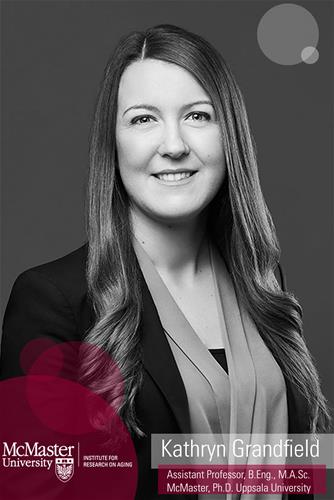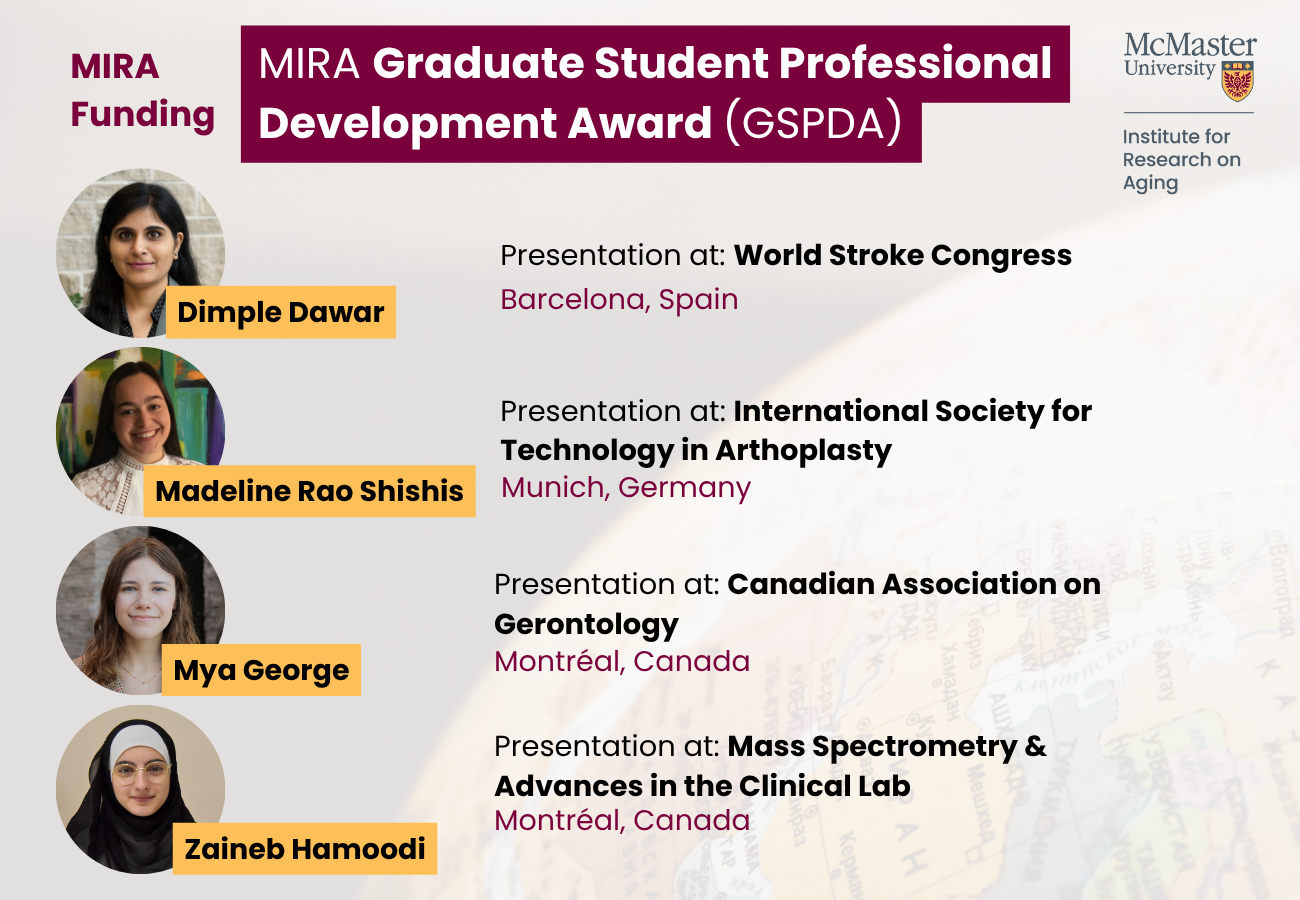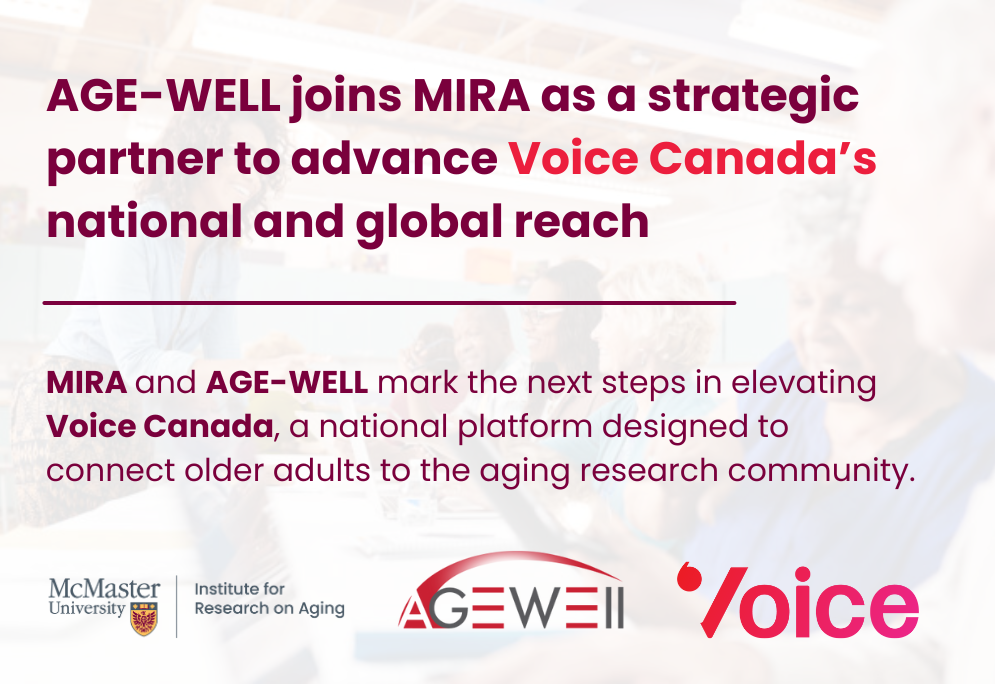
Kathryn Grandfield is an Assistant Professor in the Department of Materials Science & Engineering and School of Biomedical Engineering at McMaster University. She leads the Grandfield Research Group, is Vice-President of the Microscopical Society of Canada and is the 2017 recipient of Petro Canada’s McMaster University Young Innovator Award, among other accolades. Her age-related research focuses on improving bone implants, such as dental implants and hip replacements, in older adults with bone disease.
As a biomedical engineer, can you tell us what your interest is in aging?
As the percentage of older adults in our population increases, we need smart strategies to help reduce barriers—strategies that work for older adults, and for the rest of the population as well such as total joint replacements that integrate well with bone and maintain a patient’s mobility. My interest was always in biomedical engineering; but there is a clear need to deliver innovative solutions that will ultimately increase the potential of our aging population.
Can you tell us about your research?
Our research began by looking at the attachment of bone to implant materials (e.g., dental and orthopedic implants, such as hip replacements). There are several challenges to forming a strong bond between implants and bone, particularly with patients who have poor bone quality, which we often see in older adults with osteoporosis. This can lead to increased fractures after joint replacement surgery. One of the ways we are shaping our focus is to look at how we can understand osteoporosis in the context of the success of an implant device. Long-term, we’re interested in engineering materials that can improve attachment to poorer quality bone, such as osteoporotic bone.
Why do the bones of older adults with osteoporosis have a harder time fusing to implants?
Osteoporosis is diagnosed when a patient has lower bone mineral density, but there is limited knowledge about what that actually means inside the bone. What we currently understand is that parts of the bone get thinner. However, we’re not sure if, at a smaller scale (hundreds of times smaller than the thickness of a human hair), something changes within the bone. Bone forms throughout our entire lives; so, in ten years, a healthy adult may have all of their bone turned over. We want to see what the structure of the new bone forming during osteoporosis looks like and how that impacts the bone’s ability to attach to implant devices or to resist fractures after receiving an implant device.
“As our population ages, there are clear needs and ​challenges. Engineers are well-equipped to provide practical solutions to these needs, and generate novel advances in the field of aging.”​
Why is it necessary to develop a device that resists fractures?
One of the treatment methods for, say, a broken hip, could be a total hip joint replacement. But in older populations, there’s a higher instance of patients having secondary fractures after their joint replacement. So, how can we ensure that these patients have suitable implant devices? It’s an important question to ask. But to do that, we really need a fundamental understanding of what the bone disease looks like at a microscopic (nano) scale to then engineer a solution.
How do you hope to apply this knowledge once its gathered?
Our goal is first to understand what osteoporosis looks like at its smallest scale. We’ll use the Canadian Centre of Electron Microscopy here at McMaster, which will enable us to look at osteoporotic bone with some of the highest resolution microscopes in the world. The combined expertise of the team and equipment allows us to investigate bone in a way that others really aren’t able to study. We want to see the small building blocks inside osteoporotic bone to really understand if and how this bone differs from healthy bone. We hope that this will result in a better understanding of the disease and then, perhaps, better treatment therapies.
“We hope a greater understanding of osteoporotic bone at the nano scale will result in a better understanding of the disease and then, perhaps, better treatment therapies.”
Recently, you were awarded a grant from the Labarge Centre for Mobility in Aging to continue your work in this area. What do you hope to achieve with the support of this grant and your membership in the McMaster Institute for Research on Aging?
The grant gave my team the flexibility to explore a topic in bone health that we have not yet been able to investigate so deeply. It will allow us to combine our expertise and, perhaps, have a broader impact through the research we are doing by working more closely with other disciplines, including other scientists and clinicians.
What’s the link between engineering and aging?
There’s an important, yet sometimes underdeveloped, link between engineers and aging research. Engineers don’t always think we can apply what we are doing to a subset of the population, but we certainly can. We often apply our knowledge to specific diseases in biomedical engineering, so there’s no reason that what we’re working on can’t be applied to address the specific needs of older adults. For example, engineers can develop smarter technologies to enable accessibility. In our case, we can use our imaging technologies to understand osteoporosis at new depths, and then influence how we design implant solutions for older patients. As our population ages, there are clear needs and challenges. Engineers are well-equipped to provide practical solutions to these needs, and to generate novel advances in the field of aging.
Visit ​Kathryn’s lab: http://kgrandfield.mcmaster.ca/

